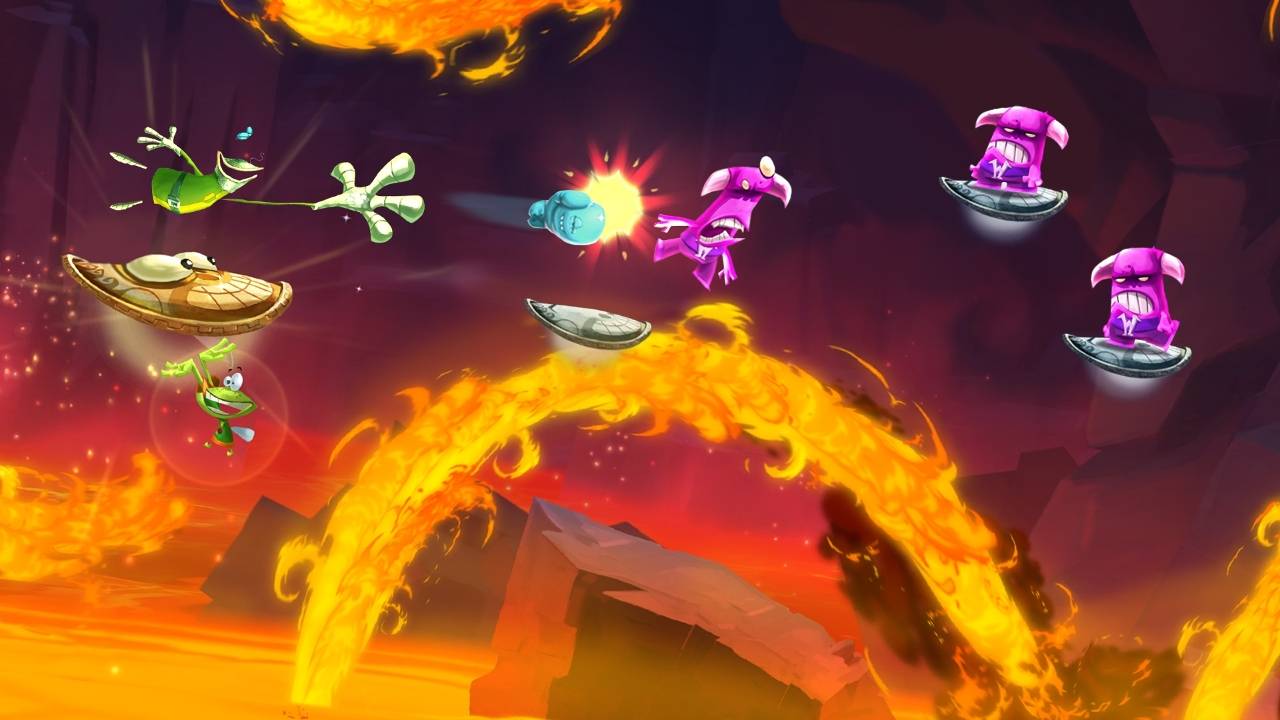
The biggest changes, however, are most apparent on the Wii U version of “Legends,” which was initially supposed to be the only version until it was delayed (and the version I played). There are also lucky tickets that you can win by beating levels, which allow you to win more lums, teensies, monsters that give you money, and even levels from “Origins.” “Legends” has a much greater focus on boss battles this time around, as each world concludes with an epic showdown with a giant enemy. Various other changes enhance the experience in subtler ways. It feels like you’re never doing the same thing more than once, all without straying from the platformer mold. Some are just straightforward platformers, but others require you to alter the level clear paths and reveal secrets, run through levels as quickly as possible, synchronize your actions to music, and even utilize stealth. The variety of challenges packed into “Legends” is incredibly surprising. However, the way that “Legends” plays with the platforming formula is mindbending, which is perhaps its greatest upgrade. “Legends” feels far less floaty than “Origins,” but the principles are similar. The developers certainly tightened the screws as far as controls go. You essentially stick with the same abilities throughout the whole game. The objective of almost every level is simply to get to the end of the level while collecting teensies and lums (used as currency). For the most part, “Legends” operates as a platformer in the purest of the sense of the word. Not too engaging, I know, but just like nearly every Mario game, the insanely fun gameplay makes up for the lack of story. Basically, some evil entity has invaded the Glade of Dreams, captured a bunch of creatures called Teensies, and filled the Glade with nightmares. The story of “Legends” is not entirely nonexistent, but it barely factors into the overall experience. The game just has this brighter, more colorful radiance to it that will often leave you breathless as you run through new levels. Where “Origins” looked strictly two-dimensional and cartoony, “Legends” sports a smoother, more rounded graphical presentation that blends 2D characters and levels with dramatic 3D backgrounds and environments. One of the first things noticeable about “Legends” is its serious graphic leap. It trumps the original in almost every way, making it perhaps the ultimate “Rayman” experience.

Yet “Legends” is far from a carbon copy, as nearly every detail of “Origins,” from gameplay to artwork to overall scope, has been drastically refined. You’re still running, jumping on platforms, pummeling enemies, utilizing the same abilities, and playing many of the same characters. “Origins” was a fantastic game in its own right, and on the surface, “Legends” wouldn’t seem much different. With its hand drawn cartoon style and wildly creative personality, “Rayman Origins” breathed new life into not just the Rayman series, but platformers in general, proving that they still had a place in today’s maturing game world.

Rayman legends enemies series#
“Rayman Legends” is the sequel to 2011’s widely acclaimed “Rayman Origins,” which attempted to revive the dormant Rayman platforming series after almost a decade (not counting the “Raving Rabbids” games, which have taken a life of their own). Yet what makes it so great is just how much fun is packed into every crevice of the game. Its fast paced platforming challenges, bizarre worlds, characters and all-too loveable sense of humor makes it a clear stand-out amongst the competition. In an age where video games are becoming more gritty and realistic, hardly anyone would have guessed that what may be one of the year’s best games would be absolutely nothing like that.ĭeveloped by revered game developer Michel Ancel’s UbiArt team, “Rayman Legends” is a vibrant splash of color and life that feels vital in today’s gaming landscape.


 0 kommentar(er)
0 kommentar(er)
